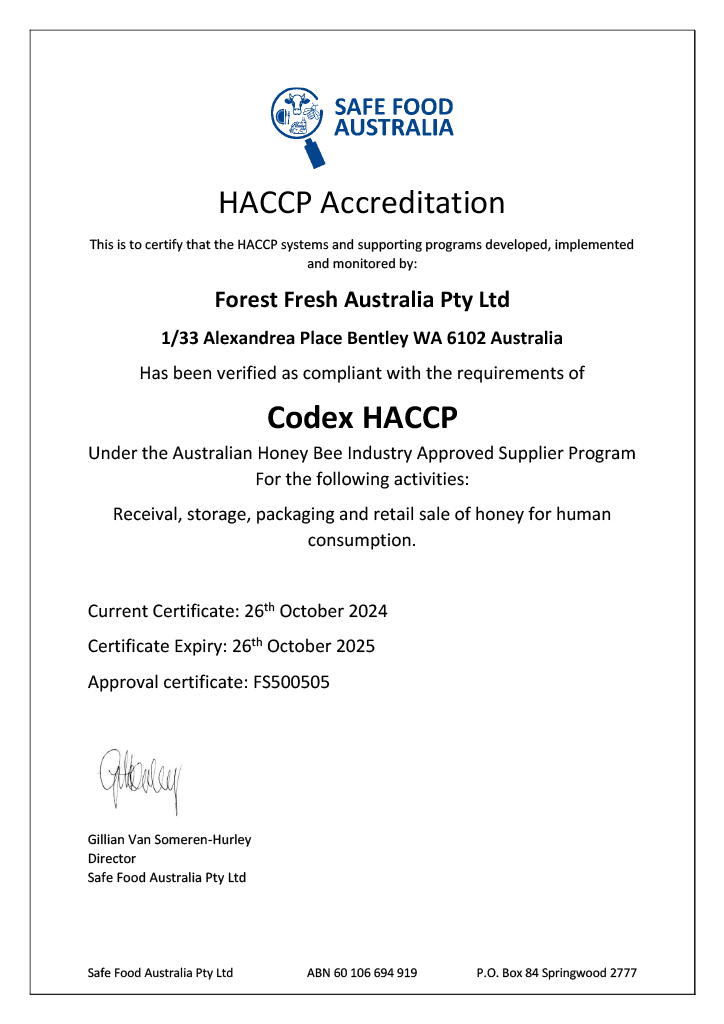Why Testing Matters in Medicinal Honey
For businesses sourcing medicinal-grade honey, bioactivity testing is crucial. Consumers are no longer satisfied with vague claims—scientific validation is what builds trust, ensures compliance, and differentiates a premium honey product from ordinary honey.Testing methods provide clear, measurable data on a honey’s antibacterial strength, ensuring that buyers receive a product with proven medicinal benefits. Among the widely used methods, the Well-Diffusion Phenol Equivalent (WDPE) test remains the gold standard for measuring antimicrobial activity.Here’s how it works and why Western Australian active honey consistently ranks among the most potent medicinal honeys in the world.
1. The Well-Diffusion Phenol Equivalent (WDPE) Test – Measuring Total Activity (TA)
The Well-Diffusion Test is the industry-recognized method for assessing antibacterial potency in honey. It measures Total Activity (TA), which reflects the honey’s ability to inhibit bacterial growth in a controlled lab environment.How the WDPE Test Works
- A diluted sample of honey is placed into a small well inside a petri dish containing a thin layer of agar infused with bacteria (e.g., Staphylococcus aureus).
- Over 24 hours, the honey’s antimicrobial compounds diffuse into the agar, preventing bacterial growth.
- The bacteria-free zone around the honey sample is measured and compared to a phenol standard (a powerful antiseptic).
- The result is expressed as Total Activity (TA), which represents the honey’s overall antibacterial potency.
What the TA Score Means
- TA10+ = Moderate antimicrobial strength
- TA20+ = Strong antimicrobial activity
- TA30+ = Highly active honey
- TA40+ and above = Exceptional potency, often exceeding medical-grade honeys
Since this test measures both Peroxide Activity (PA) and Non-Peroxide Activity (NPA), it provides a more complete assessment of honey’s antibacterial power than single-factor testing.
Key takeaway: TA is the most widely accepted measure of honey’s medicinal potential, ensuring buyers receive products with scientifically verified antimicrobial strength.
2. Western Australian Active Honey vs. Manuka Honey – What the Tests Reveal
For years, Manuka honey has dominated the medicinal honey market, largely due to strong marketing rather than superior bioactivity. However, Western Australian honey (Jarrah, Marri, Blackbutt) consistently outperforms most Manuka honey in independent TA testing.
Western Australian Active Honey (Jarrah, Marri, and Blackbutt)
- Measured by Total Activity (TA) – A combination of Peroxide Activity (PA) and Non-Peroxide Activity (NPA).
- Peroxide Activity (PA) is dominant, providing a strong, stable antimicrobial effect when activated by moisture (e.g., saliva, wounds).
- Naturally rich in antioxidants and prebiotic compounds, supporting immune function and gut health.
- Proven bioactivity up to TA50+, making it one of the strongest natural honeys in the world.
- Sourced from pristine, disease-free forests in Western Australia—produced without antibiotics, artificial feeding, or chemical intervention.Manuka Honey (New Zealand)
- Measured by Non-Peroxide Activity (NPA), Unique Manuka Factor (UMF™), and MGO (Methylglyoxal).
- Antibacterial power comes from MGO, a compound that forms over time as the honey ages.
- Most Manuka honey has relatively low NPA values—only 3% of production exceeds NPA20, while most commercial Manuka products fall below NPA15.
- MGO content degrades over time, meaning bioactivity may weaken after extended storage.
- Primarily sourced from New Zealand’s Leptospermum scoparium plants, but subject to variability based on region and climate.
Key takeaway:Western Australian honey provides a more stable, broad-spectrum antimicrobial effect, consistently testing at higher TA levels than most Manuka honey on the market.
3. How Buyers Can Use These Insights to Make Better Decisions
For importers, retailers, and brands looking to source medicinal honey, relying on marketing claims is a high-risk approach. Instead, businesses should focus on third-party test results, transparent grading systems, and scientifically validated methodologies.Here’s how to apply this knowledge when sourcing honey:
1. Always Verify Total Activity (TA) Levels
- Request independent lab results showing WDPE test data for each batch.
- Ensure TA scores align with medicinal use—TA30+ is the benchmark for high bioactivity.
2. Understand the Stability of Bioactive Compounds
- Western Australian honey provides stable antimicrobial effects when exposed to moisture, making it ideal for functional foods, supplements, and topical applications.
- Manuka’s MGO-based activity can degrade over time, meaning storage conditions impact its effectiveness.
3. Choose Honey That Aligns with Your Market and Product Needs
- Functional food & supplement brands should prioritize stable bioactivity and proven prebiotic effects (e.g., Western Australian Jarrah).
- Medical and pharmaceutical industries should look for high TA scores and independent verification of antimicrobial strength.
- Retailers and wellness brands should ensure their honey is sustainably sourced, free from artificial treatments, and compliant with export regulations.
Final Thoughts – The Future of Medicinal Honey TestingAs consumer demand for scientifically validated honey grows, businesses that prioritize test-backed, high-TA products will hold a significant advantage in the global market.
Western Australian honey’s combination of high TA, strong PA/NPA balance, and stable bioactivity makes it a superior choice for medicinal and functional applications. With ongoing research and improved honey grading systems, buyers now have access to better data, clearer sourcing standards, and more reliable supply chains than ever before.
For businesses looking to source premium active honey with proven bioactivity, the next step is simple:Demand transparency, request independent test results, and choose honey that offers verified medicinal benefits—backed by science, not just marketing.























































.png)
.png)
.png)












